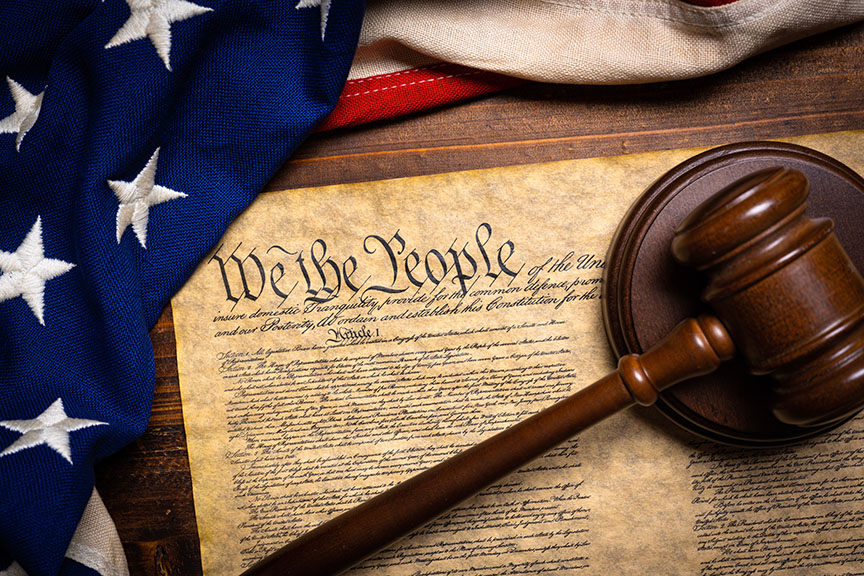Every four years, we, the American people, go to the many ballot boxes spread across our nation to elect our head of government directly, or that’s what some might think. Since even before our nation’s official founding, with the creation of the Constitution, we, the American people, have been concerned with the fairness of our government. That is why, in 1776, our Founding Fathers declared independence from King George III, because their needs were not represented in the British government. Today, we have another problem with fairness. Presidents have entered the office without the majority support of the American people. Today, Republicans fear that if the election system is changed, the party will have a harder time winning elections, and they are unfairly holding on to the Electoral College to give themselves more power in elections. Thinking about this in a non-partisan way, no party should have an unfair advantage in elections. That is why the Electoral College is not fit for our modern democracy.
According to the Pew Research Center, 63% of Americans “would instead prefer to see the winner of the presidential election be the person who wins the most votes nationally.” Of these people, 80% identify as Democrat voters and 46% as Republican voters.
To understand why the Electoral College is outdated, we must first understand how electorates are assigned to states. The number of electors each state gets is the same as the representatives they have in Congress, with the exception of Washington D.C., which just gets three. Whichever candidate gets the majority of the 538 electoral votes (at least 270) wins the election.
When the Founding Fathers were debating how the country should be governed and how the president should be elected, there were no other democracies in the world. At the time there were two main worries the Founding Fathers had: having a large, uninformed population voting and about larger states having more power and “overrunning the smaller states,” according to CBS News.
In March of 1788, when the debate about whether or not to have a Bill of Rights was waged, Alexander Hamilton published in The Federalist Paper No. 68: “This process of election affords a moral certainty, that the office of president, will never fall to the lot of any man, who is not in an eminent degree endowed with the requisite qualifications. Talents for low intrigue and the little arts of popularity may alone suffice to elevate a man to the first honors in a single state; but it will require other talents and a different kind of merit to establish him in the esteem and confidence of the whole union, or of so considerable a portion of it as would be necessary to make him a successful candidate for the distinguished office of president of the United States.” Despite these safeguards, the system introduced both balance and unintended consequences.
Hamilton worried that an ill-qualified candidate could obtain the presidency by persuading a majority of uninformed voters. This flaw of the time, as well as the concern that larger states could use their large populations to overpower the smaller states, led the Founding Fathers to create a system that not only gave some power to the people but also distributed it fairly between small and large states. At the time, one thing this did was give more power to slave-owning states, which, because of the three-fifths compromise boosted their population, giving them more electorates.
While these concerns may have been valid back in the day, today, they are now irrelevant.
According to the Pew Research Center, today, ‘[65] of the world’s 125 democracies, the head of state–nearly always called a president–is directly elected by voters.” Other democratic countries have installed the popular vote, thereby surpassing the governmental system we brought back from Ancient Greece to elect the head of government. Now it is time for us to use that superior system–direct election.
Having ill-informed voters is also not a problem today because not only do we have a decently well-functioning public school system which we didn’t have during the creation of this nation, but we also have modern technologies like the internet, television and radio, where citizens can access information about political candidates. This year, according to Nielsen, a media data and analytics company, “The ABC News Presidential Debate between Vice President Kamala Harris and former President Donald Trump drew an estimated audience of 67.1 million viewers.” That is over 40% of the number of people who voted in the election.
The Electoral College is also not the best way to elect the president because it does not always align with the popular vote. This has happened five times: with Trump in 2016, with Bush in 2000, with Harrison in 1888, with Hayes in 1876.
The popular vote did not decide the 1824 election between John Quincy Adams and Andrew Jackson, but the circumstance led to a vote decided by the House of Representatives.
The current system is making some votes count more than others. Nationalpopularvote.com does a beautiful job putting this into perspective by looking at the election of 2000, stating, “In 2000, George W. Bush became President even though Al Gore won the national popular vote by 537,179 votes. Bush won because he carried Florida by 537 votes. Each of these 537 votes was 1,000 times more important than the 537,179 votes cast in other states.” This shows that in certain circumstances a small amount of voters can swing the election away from the popular vote.
Another flaw of the Electoral College is that misinformation can be spread by misinterpreting a candidate’s margin of victory. For example, in 1980 Ronald Regan beat Jimmy Carter by winning 489 of the 538 electoral votes. Alex Brammer at The Guardian called Reagan’s victory a “landslide,” but Regan’s margin of victory was not as large as it appears to be. Reagan won 91% of the electoral votes yet only won 51% of the 83 million total votes. If Reagan had the same amount of the popular vote as he did the electoral vote, he would have won around 78 million votes. The Electoral College misconstrues the popular opinion of the American people revealing yet another flaw with its usage.
Reagan did beat Carter by 8.4 million votes, about 10% of the popular vote, but it should be mentioned that independent John Anderson received 5.7 million votes. The Washington Post reported, “[Anderson] has seen at least one poll which indicated if he ran as an independent he would take away as many votes from Reagan as from Carter.”
My last flaw with the Electoral College is that the electorates are not aligned with the population. According to usafacts.org, only 20 states are within one electorate of their true population share, and there are states, like Texas, that are being underrepresented and other states, like Wyoming, that are being overrepresented. They show that Texas currently has 40 electoral votes, but if Texas was proportionally represented based on its population, it would have 49 electoral votes. For Wyoming, usafacts.org shows that it currently has three electoral votes, but if Wyoming was represented based on population, it would have 0.9 electoral votes. Because states cannot have less than three electoral votes, there are many states overrepresented making it impossible to represent all the states accurately.
Finally, there are those who believe that the Electoral College is important because if it was removed, large cities would control the election, but that is not true because the population in large cities is almost identical to the population in rural America. According to nationalpopularvote.com, with data from the 2010 census, it states that the population of the 100 biggest cities is about 59.8 million people or 19.32 percent of the population, and “this number is almost identical to the rural population of the United States, as defined by the U.S. Census Bureau, of 59,492,267 people (19.27% of the U.S. population).” This shows that large cities will not control elections because they have almost the same power as rural America.
In conclusion, the Electoral College, while historically significant, no longer serves the needs of a modern democratic society. The system’s original intent to balance power among states and prevent uninformed voting is now outdated given the advancements in education and technology. The misalignment with the popular vote, the disproportionate influence of certain states, and the potential for misinformation all highlight the flaws of the Electoral College. As other democracies successfully implement popular vote systems, it is clear that the United States must also evolve to ensure that every vote carries equal weight and truly reflects the will of the people. The time for change is now, and transitioning to a popular vote system is a necessary step toward a more equitable and representative democracy.









